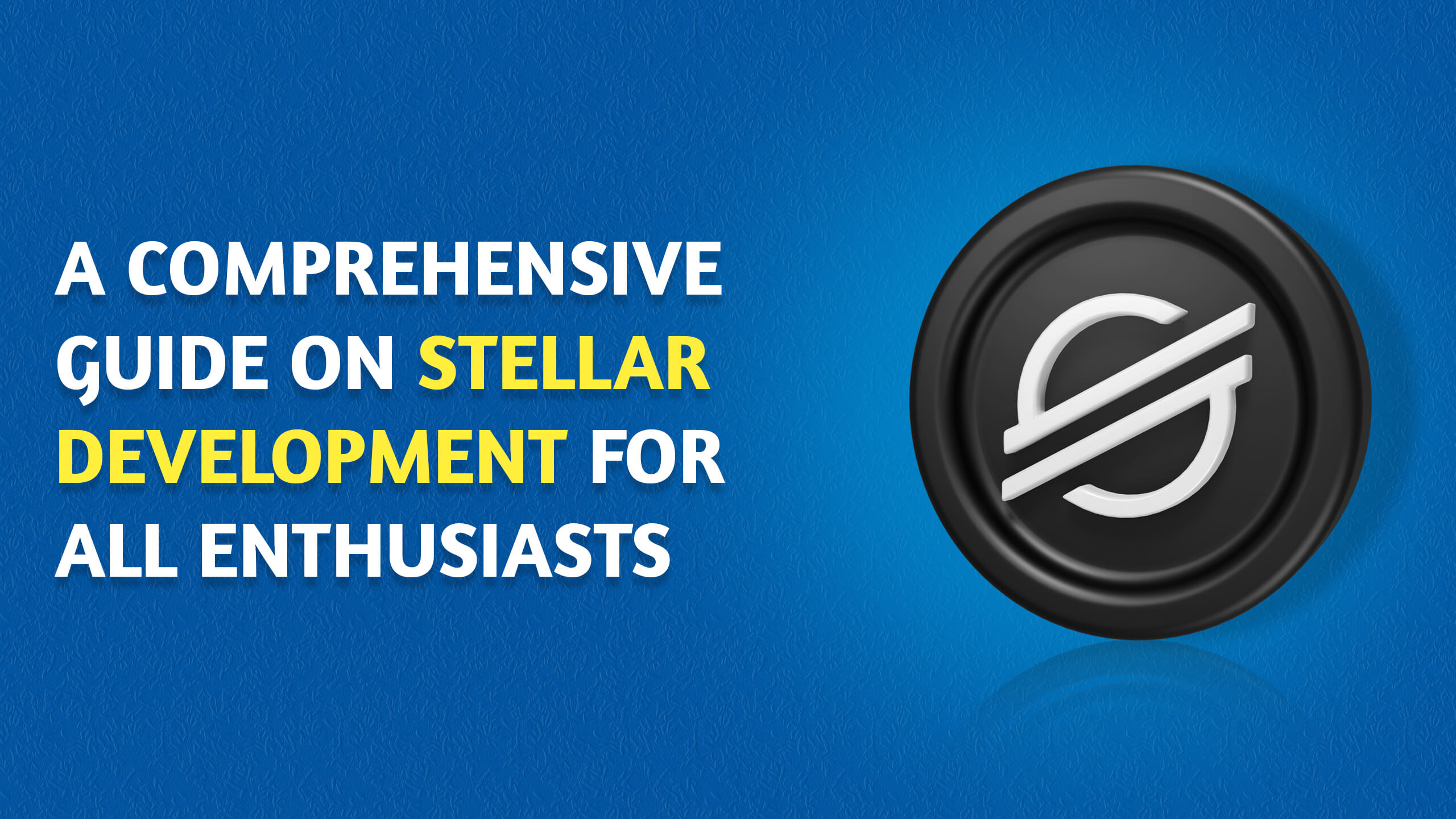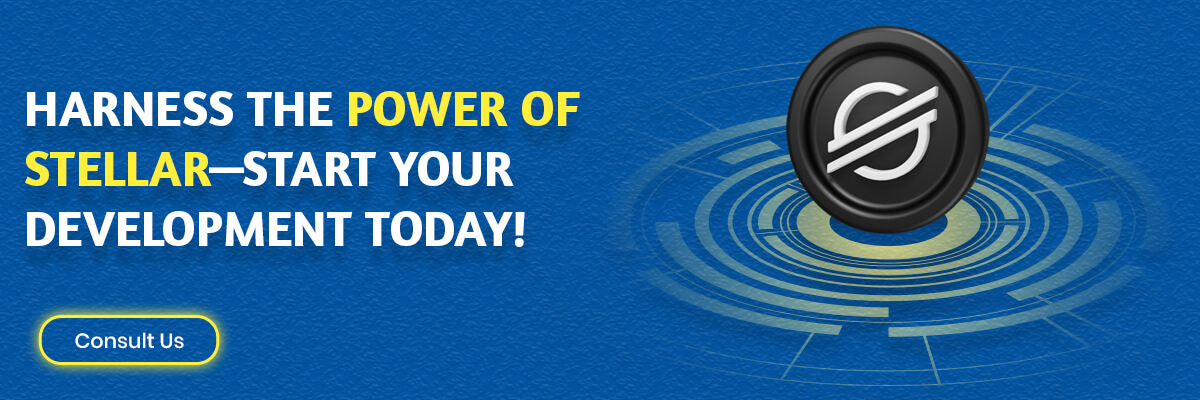Building a blockchain application or network is full of challenges and shortcomings, owing to the technical complexities, lack of appropriate understanding, and many more reasons. That’s why planning the dev project thoroughly with innovative and agile practices has become imperative for most developers. These not only allow us to assess the potential risks beforehand but also prevent any kind of delay or quality compromise during the software development lifecycle. However, when it comes to a complex network like that of Stellar blockchain, the development process won’t be as easy as one thinks.
Before you even begin with Stellar development, understanding the blockchain’s features and the underlying technologies is paramount. Only then you will be able to achieve success in the dev project and deploy the developed high-volume financial product to the Stellar global network. From the associated programming languages to the famous Horizon API, there are several facts that you must learn before the commencement of the software development life cycle. This being said, we have curated a detailed guide, explaining the technologies driving the Stellar blockchain, the best way to plan the dev project, and other associated matters.
Salient Features of The Stellar Blockchain
Understanding the typical features of the Stellar blockchain technology will help you determine the areas you would like to target using the to-be-developed financial product or application specific to this global network. Owing to this, we have listed the major characteristics of the Stellar blockchain network that have made it supreme in the DeFi ecosystem.
1. Exceptional speed: Transactions initiated on the Stellar global network require only 3 to 5 seconds for completion, thanks to complete decentralization and elimination of third-party intermediatory issuance or regulatory bodies.
2. Low transaction fees: No matter how high the amount volume is, users won’t have to pay considerable transaction fees unlike other blockchains prevalent in the market.
3. Easy issuance of assets: Thanks to the viable support codes of the Stellar blockchain, it doesn’t take too much time to issue new assets or create tokens representing real-world assets.
4. Consensus protocol: Instead of relying on regular proofing strategies, the Stellar blockchain leverages the Stellar Consensus Protocol to create a network of validators and allow every node to handle the ledger with utmost security.
5. Developer’s paradise: Owing to the comprehensive libraries of dev documentation, SDKs, and other types of dev tools, Stellar development projects can be successfully completed without any hassle.
What Are The Best Use Cases of The Stellar Development Process?
You must be wondering if the Stellar blockchain is already an existing entity and it facilitates financial transactions using both crypto and fiat currencies, then what will be the target of your Stellar development project? Your concerns are pretty genuine because most people do not have an understanding of the use cases of a decentralized blockchain. So, we have listed a few ways in which you can leverage the Stellar global network to create different types of applications and financial products.
- Wallets that accept the Stellar native currencies, namely Lumens, and work coercively with the blockchain can be deployed to its global network so that the end users can access the exchange platform for further trades and investments.
- One of the major applications of the dev projects is in creating and deploying new Stellar smart contracts. These automatic, self-executable computer programs can be developed using the underlying technologies of the Stellar blockchain, depending on the consensus protocols for further operations on the public ledger.
- NFTs can also be developed using the Stellar blockchain. These represent several in-game purchase components, like characters, accessories, weapons, and more, allowing users to convert their virtual assets into digital tokens for further revenue earnings.
- Several organizations also leverage the Stellar development process to implement new microservice payment channels, ensuring the conventional financial rails and the decentralized crypto exchange platforms can be connected using the existing Stellar anchors.
Introducing Stellar SDKs: The Building Blocks of a Dev Project
Several Stellar programming languages can be used to build high-volume applications or design a new payment channel. However, working with so many languages can create chaos and delay the software delivery timeline. So, rather than focusing on multiple areas all at a time, developers can leverage the built-in SDKs or Software Development Kits to design a Stellar application with their preferred language. Every Stellar SDK comes with its documentation and software code, allowing users to create custom applications and financial products that can cater to the expectations of the end customers with ease.
Some of the best Stellar SDKs you can work with are:
- Soroban Rust SDK
- Assembly Script SDK
- JavaScript SDK
- Python SDK
- Flutter SDK
- iOS SDK
Stellar Horizon API: The Bridge Between the Stellar Network and Deployed Applications
An average application won’t be able to communicate with the high-performance-oriented Stellar Core without any mediator. This is where the Stellar Horizon API comes into the picture. It allows different forms of financial applications, like wallets, micropayment services, and others to submit any financial transaction to the Stellar Core, stream any expected event, or fetch data for account balance queries.
Accessing the Horizon API can be done via the SDKs, browser, or the URL as per the specific project configurations. It greatly reduces the dependency on the Stellar Development Foundation and allows developers to build the applications using their infrastructure. Once the API endpoints are integrated into the software’s code structure, an automatic communication channel will be built between the application and the Stellar Core.
How to Build a Stellar Application?
Step 1: For a successful Stellar development project, your first job will be to install the specific Stellar SDK that aligns with the planned technology stack of your project.
Step 2: This SDK needs to be connected with the Horizon API so that you gain full access to the underlying architecture and features of the Stellar Core network.
Step 3: Once done, you will have to create a Stellar account that can be used to track all the transactions, make or receive payments, or create smart contracts.
Step 4: After this, you need to create an asset through the tokenization process, which can be either a fiat currency or a crypto token depending on your preference.
Step 5: Define an appropriate transaction fee based on the rules and regulations of the Stellar global exchange platform. Also, you should define the minimum balance that will be needed to keep the account active and operational.
Step 6: You need to perform a few transactions or changes to the ledger for the application to be deployed. These transaction records are immutable and cannot be manipulated further.
Step 7: After the application is deployed, leverage the Stellar Core to monitor its performance and efficiency for further optimization and improvements.
Conclusion
In this article, we have shared the details of Stellar development and how you can easily build and deploy a high-volume financial product or service to its global network. Thanks to the vast reserve of SDKs and the Horizon API, connecting with the Stellar Core network or choosing your preferred tech stack won’t be a hassle anymore. So, let’s not wait any further and get started with planning for the software development lifecycle using the Stellar blockchain.





